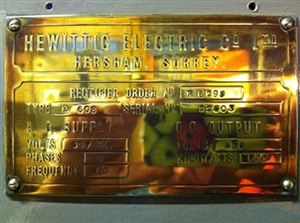
This photo has appeared on my Facebook page.
I will let this run a bit then tell you where it is and who posted if if no one guesses, though I suspect at least one forum member will recognise it straightaway.
If I read it correctly it does say it has a six phase supply.
Andy Betteridge
